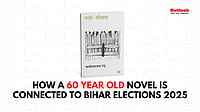Zafar was but another victim of the growing attack on mediapersons by militants as well as security forces ever since the current phase of militancy reared its head in the Valley six years ago. Just three months back, there had been an attempt to kill the BBC correspondent in Kashmir, Yusuf Jameel, through a letter bomb delivered by a burkha-clad woman. Yusuf survived the attack, but ANI videographer Mushtaq Ali who had opened the packet was killed in the explosion.
These, of course, are the extreme cases of attack on the Kashmiri media which find mention in the national press. What does not get reported, however, is the fact that the press in Kashmir is being stifled almost everyday through abductions, grenade attacks in newspaper offices and 'bans' against individual newspapers to make them fall in linewith the diktats of various militant groups, closures by the government on charges of being "prejudicial to the security of the state", and of course, the old fashioned thrashing.
The thrashings—by security forces, and of late by militant groups—are a regular feature. On December 8, even as Meraj was struggling for his life at the SMHS Hospital, some of his colleagues were beaten up at the Hazratbal complex by militants owing allegiance to the Shabbir Siddiqqi faction of the JKLF. The 'treatment' was in response to the late arrival of the mediapersons by about half an hour. So what if the media-persons had reached late because they had gone for the chehallum ceremony of the grandson of the editor of Afaq, who had died in a road accident four days back. The people who rule the Valley with their guns these days, do not carefor these niceties. After all, sudden death is a normal phenomenon in Kashmir now.
In the earlier days of militancy, journalists in Kashmir were largely caught in the crossfire between the security forces and the militants. If the security forces perceived a particular newspaper or journalist to be toeing the militants' line, they did not hold back their ire. Conversely, the militants did not stop short of targeting mediapersons if they felt that the official version was getting too much space. To use a cliche, the press was caught between the devil and the deep sea. The problem has been compounded with the entry of renegade militants on the scene.
The problem has become compounded now with the entry of the renegade militants on the scene, as well as the proliferation of other militant groups quite often working at cross purposes. Each of the tanzeems (groups)wants publicity, and each is jealous of the coverage that the other is getting. In September this year, when the JKLF split, the warring factions warned the press of dire consequences if they carried reports about the claims and counterclaims of the two groups. Not quite knowing how to tackle the situation, the Kashmiri press stopped work for an unprecedented 11 days. The specific problem was somehow resolved, but the daily nightmare continues. The press in Kashmir is truly under siege.

























